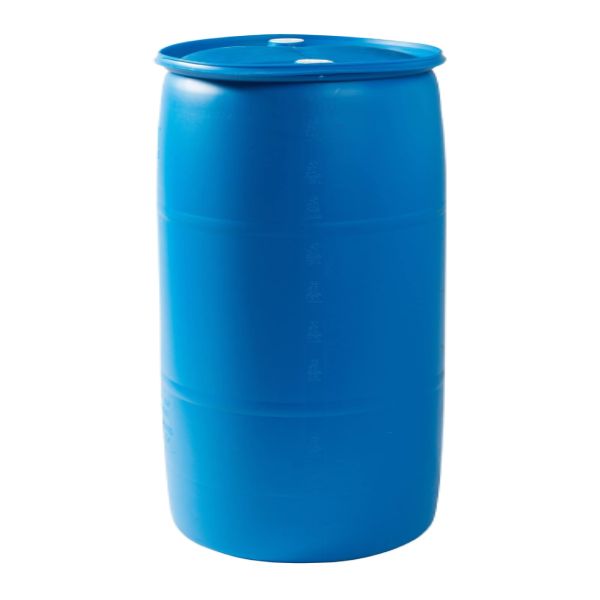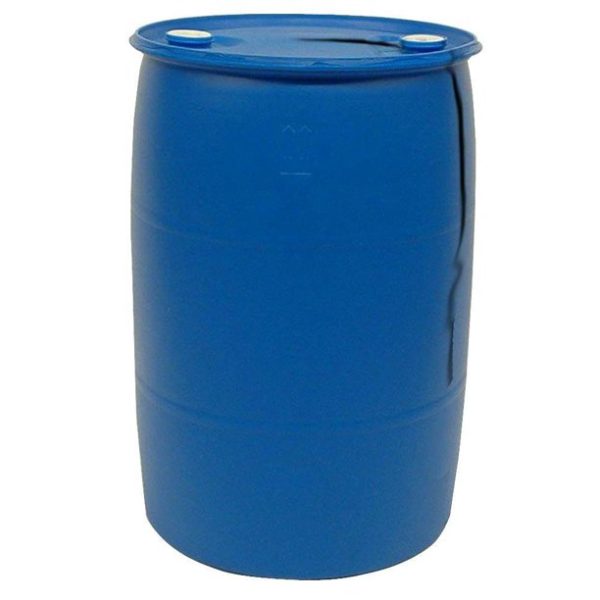Securing access to drinking water is the most important thing you can do to prepare for an emergency. All other resources, while important in their own right, are secondary to water, as without water, you will die within three days. However, you will begin feeling unwell and notice the side effects of dehydration within the first day. It makes it even more difficult to survive any given emergency. But fear not; there are many ways to store sufficient water for both you and your family or other companions. An excellent method of securing your water is by using a 55 gallon drum.
This gives you the ability to store a large quantity of water in a single container. For reference, emergency services recommend you store one gallon per person per day of the emergency. Using this suggestion, you can use this information to guide how much water you store. For example, if you live alone in an area prone to floods, and a typical flood lasts about three days. You should store at least three gallons of water.
Many people often have difficulty finding the right containers to store their water. They want something strong enough to withstand constant handling and forcers during an emergency. Also, it is large enough to store a sufficient quantity of water. This is why a 55 gallon drum is excellent for water storage. This container can store 11 days worth of water for a family of 5 or even a full 55 days of water for a single person. However, despite this great functionality, there are still a few things you should know before you begin storing your water in a 55 gallon drum as a drinking water barrel for an emergency.
Select the Right 55 Gallon Drum
Drums of this size are used for a variety of purposes. Some are even used to store industrial chemicals, while others are used for temporary storage. When selecting a drum to store your drinking water, you want to ensure the material of the drum won’t affect the water. Using the wrong material may mean that toxic or unpleasant chemicals from the drum permeate your water. Compounds and pollutants from outside the drum are infused in the water. A poorly selected drum may also deteriorate or easily damage, leaking all the water you tried to conserve.
The stakes are a bit higher in this respect when you are using such large containers, as you may feel safe knowing you have a whole 55 gallons of water stored only to find that all of it is undrinkable or gone when it is time to use it. If this was your only source of water, this might put you in a dangerous position. This is why it is suggested you take special care when selecting the right drum for your purpose. Ideally, you should try to find a drum made out of food-grade plastic. It will typically be used to store food items or ingredients. This means it will have a long lifespan. Be sure to not have harmful compounds in it that could affect your drinking water.
Prepare the Drum for Usage
Before filling the drum with drinking water, be sure to disinfect and thoroughly clean it. Bits of debris or residual harmful compounds from manufacturing may still be inside the drum. If possible, gently scrub the inside of the drum with mild dishwashing detergent. Then rinse the drum with water several times, ensuring all the soap and suds are gone. Only after this point could you begin filling your drum with drinking water. However, remember to do this with the utmost caution. It ensures nothing accidentally falls into the drum with the water, such as dust or dirt. You may fill the drum at home with your tap water or at a water dispensary location. If you are in the midst of an emergency and need to refill your drum, you can go to any emergency station near to your home and request a refill.
Store in a Cool and Dry Place
Although a 55 gallon drum made from food-grade plastic will be much safer for you, it is still not foolproof. If you store it in a hot or sunny place, it could affect the quality of the plastic and water. This may increase the activity of microorganisms that will make the water undrinkable, or it may simply speed up the process in which the plastic is naturally broken down, compromising the integrity of the drum. To avoid these issues, simply find a spot to store the drum in a cool place outside of direct sunlight, such as your basement, home pantry, or backyard shed.
It is also important that you keep it out of humid or wet places. Although the drum will of course be sealed tight and water should not be able to get in or out, once you open it for use harmful compounds or microorganisms may infiltrate the water. For example, if you are experiencing a flood and your water drum is in the flood water, when you bring it inside your house to drink, you may open it, and dirty water from the lid or the surrounding drum may drip into your water. This could tain the entire water drum or speed up the process by which the water naturally becomes undrinkable because of stagnation and a build-up of microorganisms.
Replace Your Drinking Water Twice a Year
Even the cleanest drinking water has a lifespan once left in a still drum. If you are storing water for an emergency, you should mark down the date you fill your drum, this should ideally be done on the drum itself to ensure you and your companions always have immediate access to this information, so you will know whether the water is safe to drink at a moment’s notice. It is recommended that you replace your drinking water every six months, so roughly twice a year. Always check your 55 gallon drums to ensure they do not need to be replaced before an emergency. This will ensure you are always prepared with a safe drinking water barrel you can depend on in times of an emergency.
Katy Willis is a writer, lifelong homesteader, and master herbalist, master gardener, and canine nutritionist. Katy is a preparedness expert and modern homesteader practicing everyday preparedness, sustainability, and a holistic lifestyle.
She knows how important it is to be prepared for whatever life throws at you, because you just never know what's coming. And preparedness helps you give your family the best chance to thrive in any situation.
Katy is passionate about living naturally, growing food, keeping livestock, foraging, and making and using herbal remedies. Katy is an experienced herbalist and a member of the CMA (Complementary Medical Association).
Her preparedness skills go beyond just being "ready", she's ready to survive the initial disaster, and thrive afterward, too. She grows 100% organic food on roughly 15 acres and raises goats, chickens, and ducks. She also lovingly tends her orchard, where she grows many different fruit trees. And, because she likes to know exactly what she's feeding her family, she's a seasoned from-scratch cook and gluten-free baker.
Katy teaches foraging and environmental education classes, too, including self-sufficient living, modern homesteading, seed saving, and organic vegetable gardening.
Katy helps others learn forgotten skills, including basic survival skills and self-reliance.
She's been published on sites such as MSN, Angi, Home Advisor, Family Handyman, Wealth of Geeks, Readers Digest, and more.


